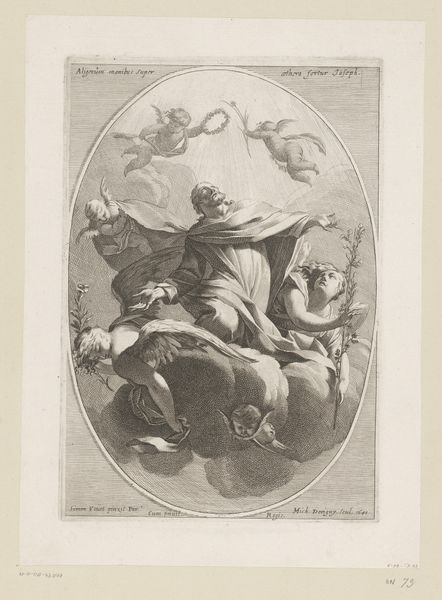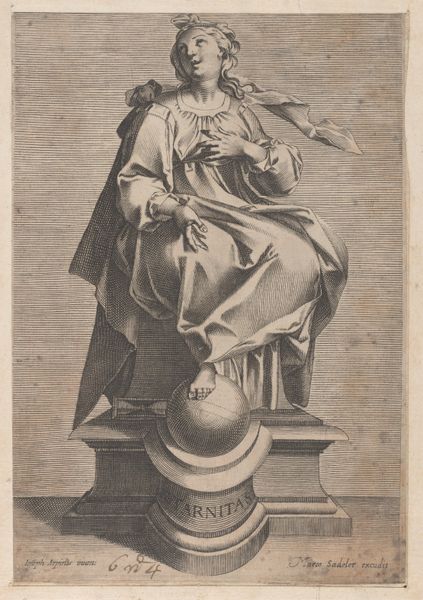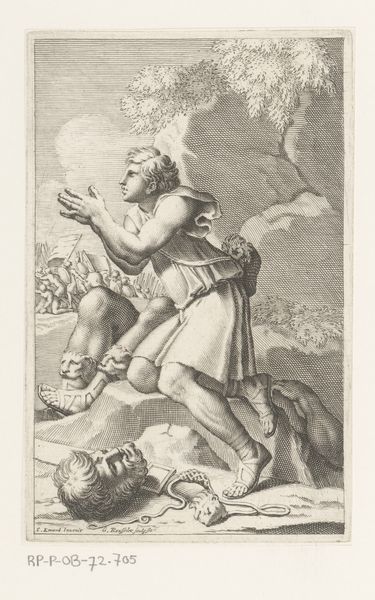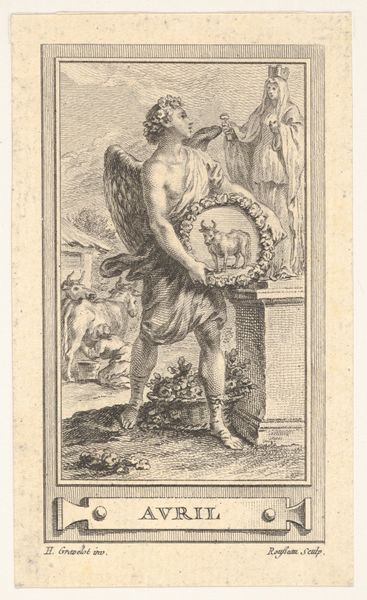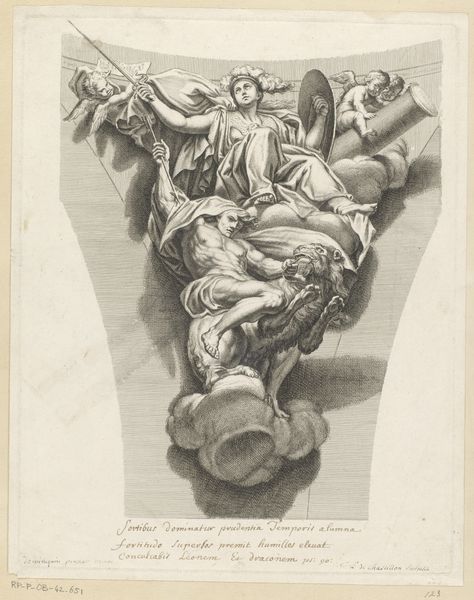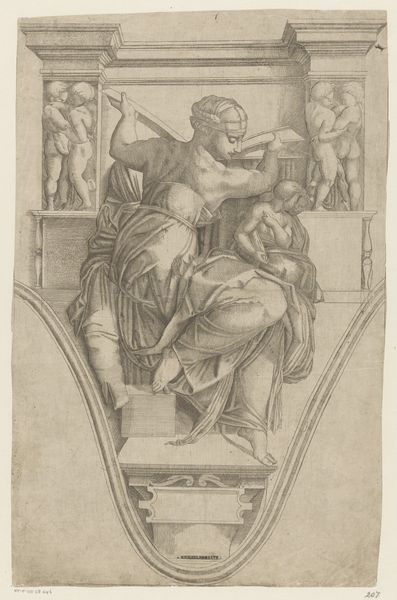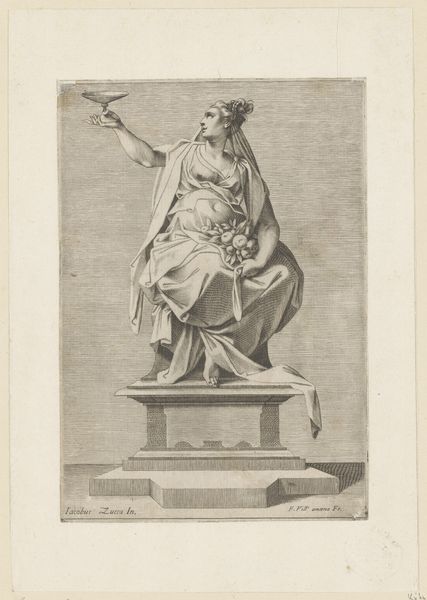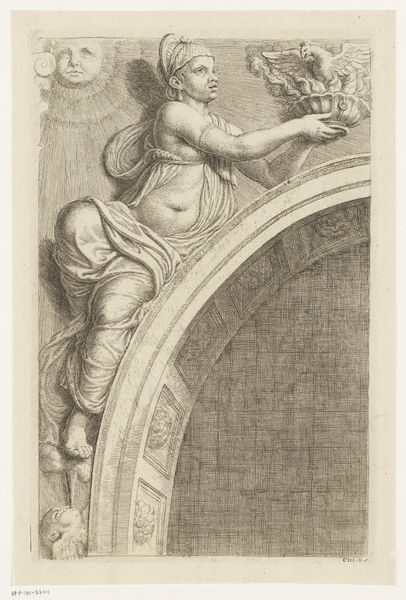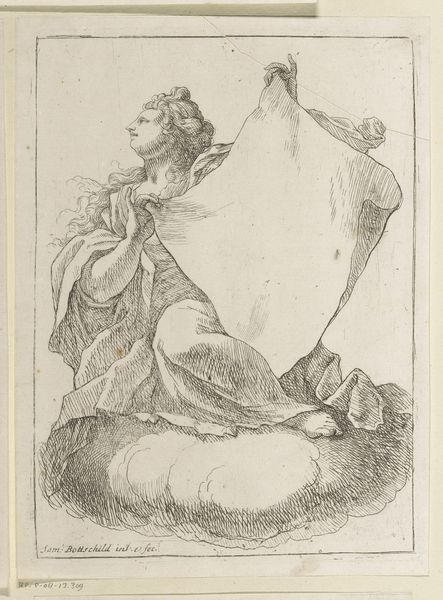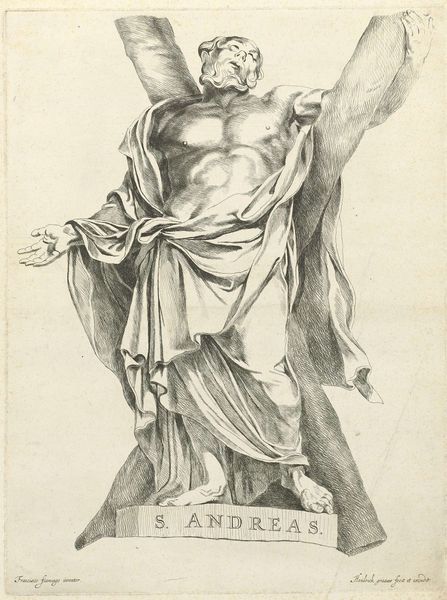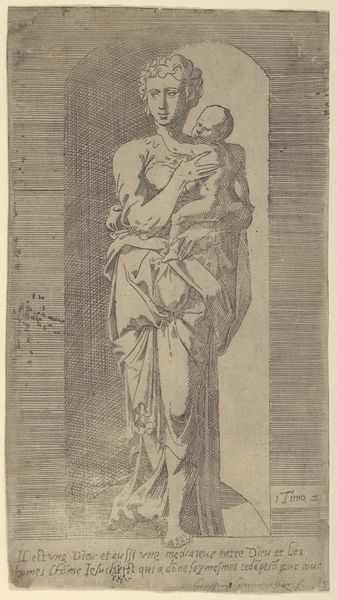
print, engraving
# print
#
figuration
#
11_renaissance
#
history-painting
#
engraving
Dimensions: height 278 mm, width 203 mm
Copyright: Rijks Museum: Open Domain
Curator: I am struck by the visual austerity of this print. The sharp contrast created by the engraving technique immediately draws one into the figural arrangement. Editor: Indeed. This engraving, "Libische Sibille," after 1512 and housed in the Rijksmuseum, speaks volumes about the artistic process itself. One can almost feel the pressure of the tool against the plate, creating the varying tonal range, which results in the overall dramatic and textured composition. Curator: The interplay between light and shadow lends itself to the depiction of weight and volume. Note the rendering of the sibyl’s muscularity, a deliberate artistic choice to convey power and perhaps divine authority. How does the artist use line to delineate form, particularly in her draped clothing and elaborate headdress? Editor: Well, I think we must consider that the original print's making process may have involved labor specialization, where apprentices prepared the plate and etched the design while the master completed the refinements. Curator: Irrespective of the division of labor, it’s hard to ignore the figure's intentionality. See the arc formed by her pose—how that curves from the pressure against the large volumes she balances across her shoulders. She supports not mere objects but bound books, hinting at vast knowledge and influence. Editor: Perhaps, but let’s consider the socio-economic dimensions: What type of paper was used, how was it made, what were the modes of its distribution and consumption, and to what extent does this work highlight a tension between manual and intellectual labour, challenging conventional views about creativity and skill? Curator: You've presented thought-provoking questions that push our viewing, while, at the same time, it helps the viewer ask new questions about the place of labor and how it relates to artistic achievement in both past and present. Editor: Exactly. That consideration might enable audiences to think about these visual and historical artefacts in different ways.
Comments
No comments
Be the first to comment and join the conversation on the ultimate creative platform.

